SASKATOON — From a hilltop overlooking endless golden fields and rolling landscapes, the morning sun rises to the echoing calls of distant sandhill cranes and snow geese. From above, you’ll hear the lyrical chatter of migrating longspurs, pipits and larks. From a distant aspen woodlot, a buck elk trumpets its territory. Such is a typical autumn dawn in southern Saskatchewan.
If you like to travel through remote open countryside, then make the backroads of Saskatchewan your next wild destination. Late September and early October is a good time to visit the Prairies, especially around Regina and Saskatoon. Largely untouched by tourists and full of migrating birds with endless rustic scenery, Saskatchewan is a photographer’s dream.
Scenes and subjects for every photographer
Saskatchewan covers more than 650,000 square kilometres with a small population of just over one million. A network of roads spreads over these vast open spaces providing an infinite show of picturesque landscapes punctuated with rustic sheds, grain elevators and abandoned buildings. Although some of the Prairies are flat, most of it flows with rolling hills under big skies.
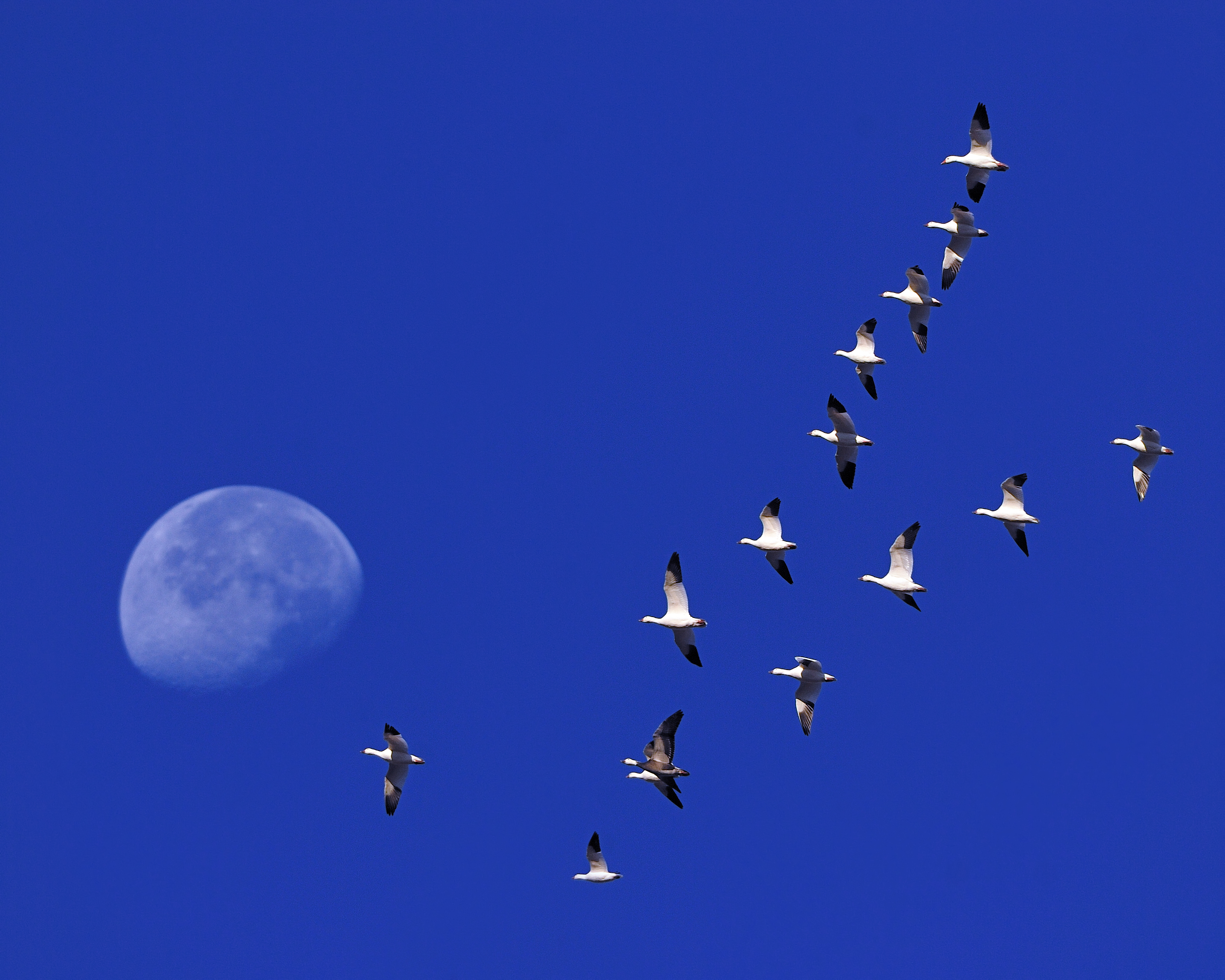
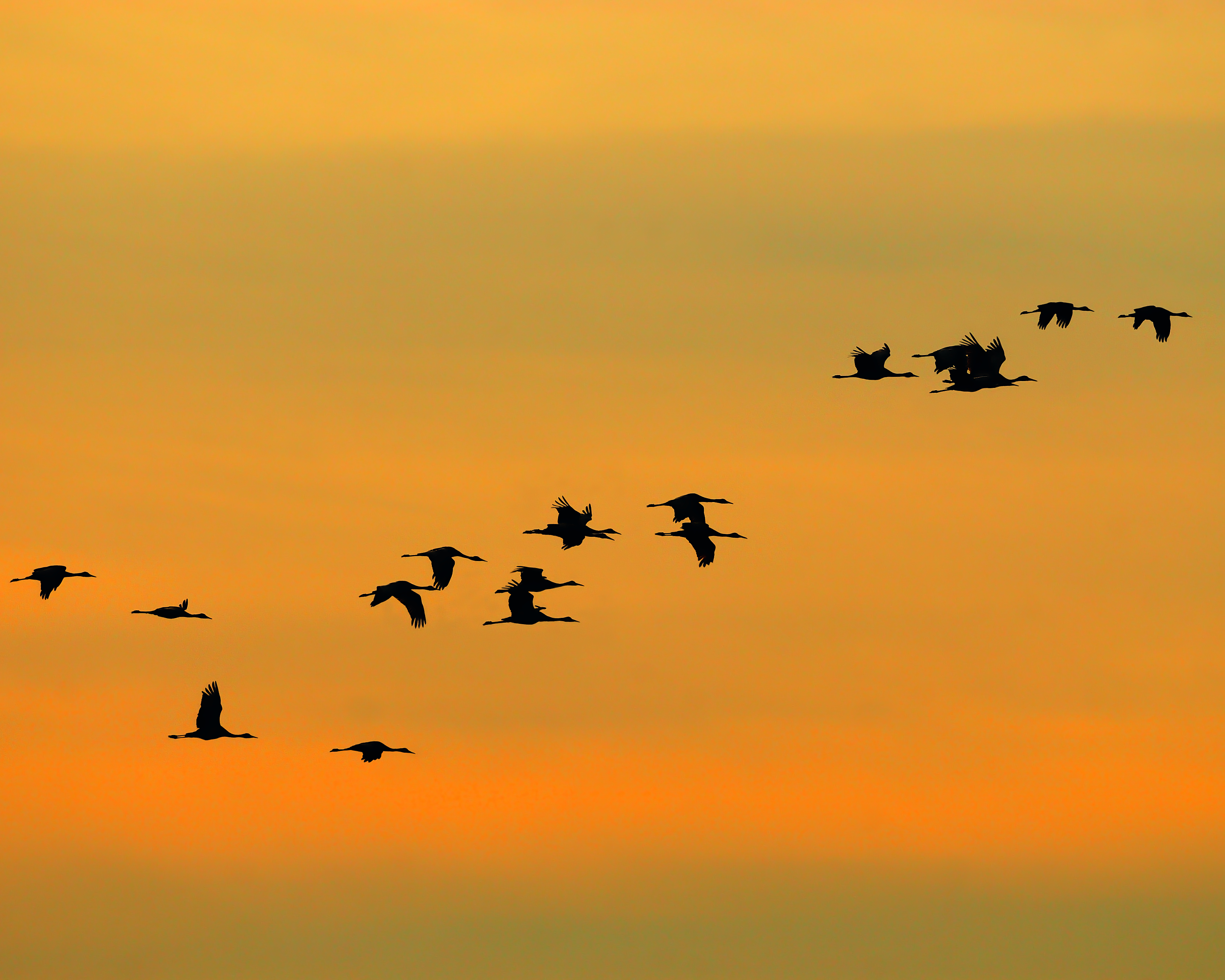
Left: Lesser snow geese and Ross’s geese migrate south. Right: A small flock of sandhill cranes.
Millions of birds use the central flyway as a route between the breeding grounds of the Canadian Arctic to the wintering grounds of the United States. While on route, hundreds of thousands of migrating ducks, geese, shorebirds and sandhill cranes rest in the open fields and wetlands of the Prairie provinces.
Photographers with discerning eyes should look for rare and endangered species like the whooping crane, North America’s tallest bird. With around only 600 left in the world, the species is at risk of extinction. However, a few are usually observed somewhere in the harvested fields of southern Saskatchewan while travelling between their nesting areas of Wood Buffalo Park in northern Canada and the wintering grounds in Aransas, Texas.
Driving around, you’ll pass many wetlands and Prairie sloughs full of life. Bald and golden eagles often follow these birds looking for easy prey. If you’re lucky, you’ll witness a family of eagles disrupting a large flock of waterfowl, chasing thousands of birds into the air producing one of nature’s greatest spectacles – a swirling mass of birds dominating the sky.
Thousands of Arctic songbirds like snow bunting, horned lark and lapland longspur migrate through the tundra-like Prairies looking for seeds and insects. With fall colours emerging, the forested parklands, campgrounds and isolated woodlots are often full of warblers and sparrows coming down from Canada’s Boreal Forest. Deer, moose and elk also hide in these woods while pronghorn and coyotes roam the open fields.
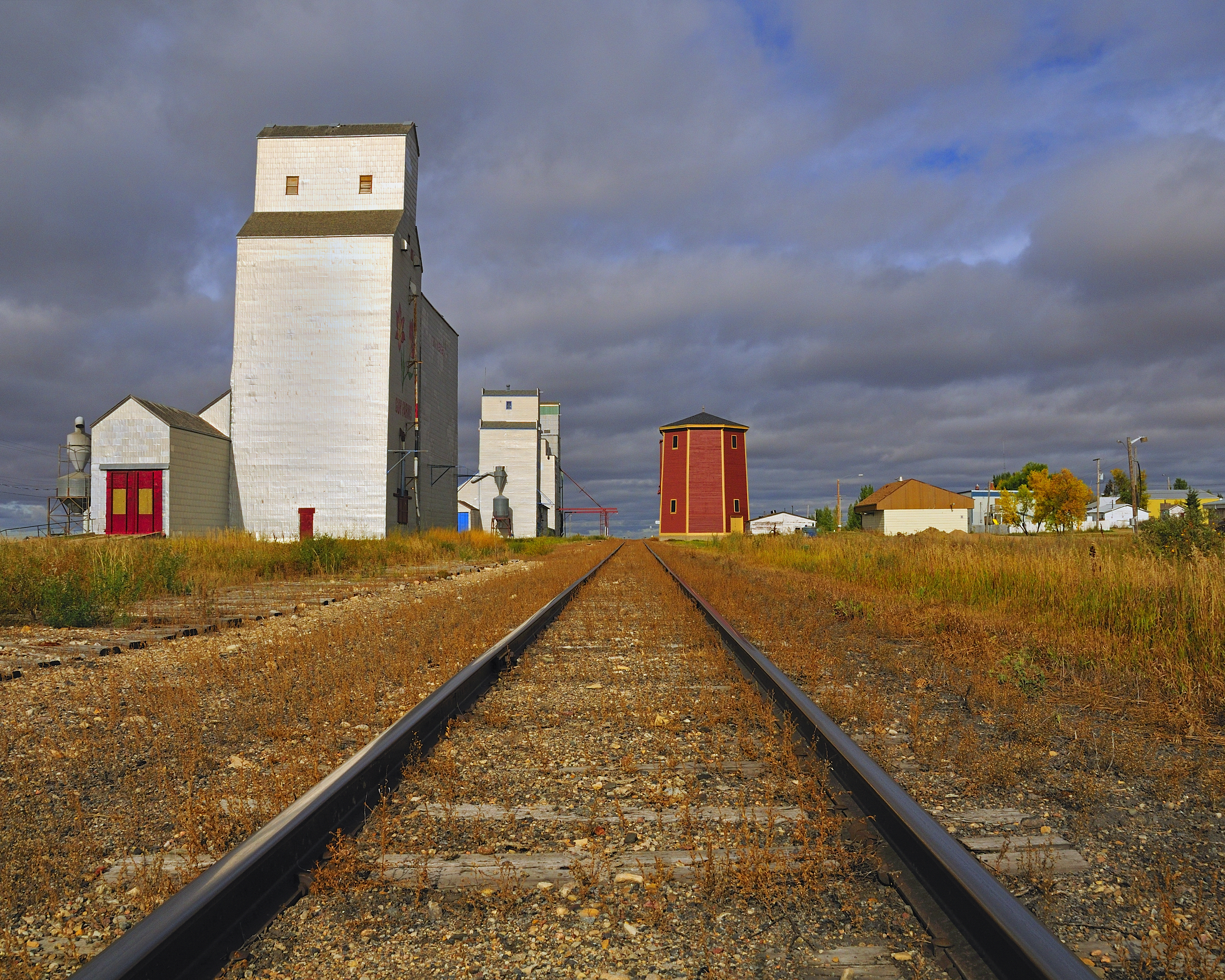
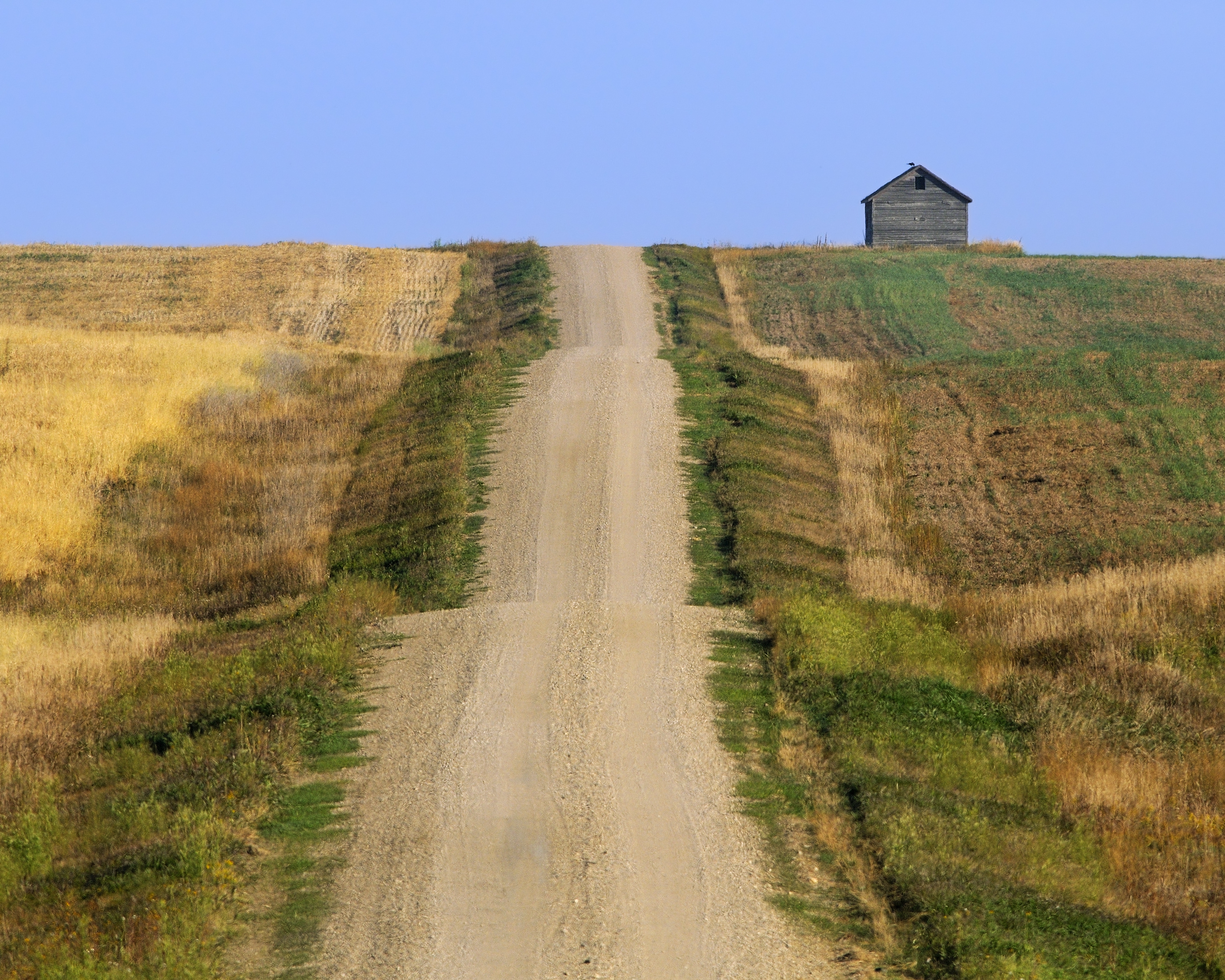
Left: Tracks lead to grain elevators in Kenaston. Right: A vacant shed at the top of rolling hills near Saskatoon.
Planning your adventure
With so much land to cover, photographers will want to spend several days capturing what Saskatchewan has to offer. It’s easy to run productive photography day trips from Regina or Saskatoon. The more adventurous will want to explore while camping, or staying at lodges in remote communities.
Virtually any of the backroads of the province hold potential for photographers to see wildlife. However, some of my favourite spots include: Last Mountain Lake, Quill Lakes, Gardner Dam/Lake Diefenbaker, Danielson/Douglas Provincial Parks, Grasslands National Park and Cypress Hills.
.jpg)
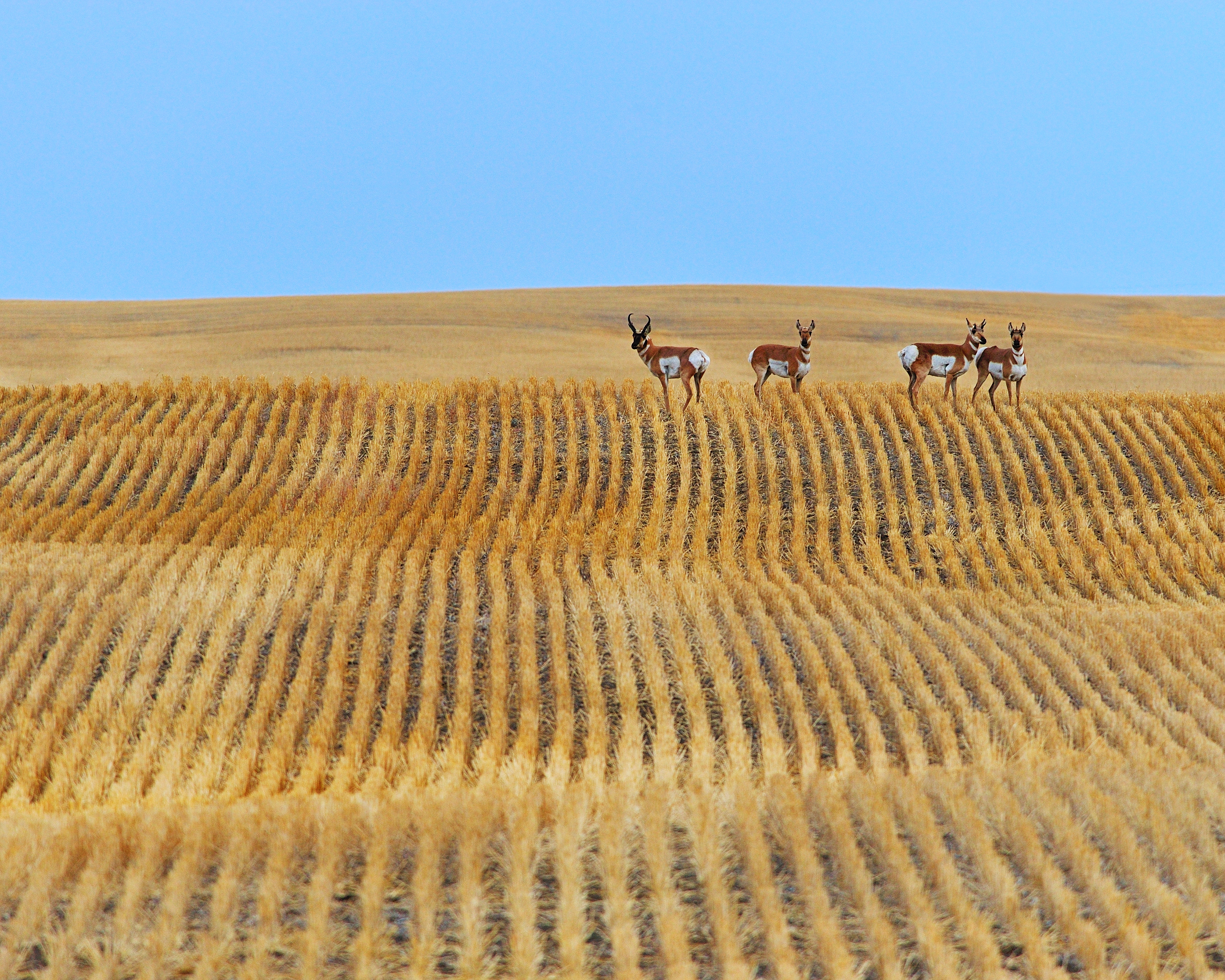
Left: Grain elevator at sunset in Riverhurst. Right: Four Pronghorns roam through a harvested field.
How to prepare to photograph Saskatchewan
Expect all types of weather in the fall. Prepare for rain, cold and even snow. However, there’s a good chance you’ll have comfortable and clear conditions.
Keen photographers will want a long telephoto lens, especially for wildlife. Wide angle and short telephoto zooms are ideal for the abundant scenery and sunsets. A solid tripod helps keep your camera steady, especially if you’re after images of a star-filled Prairie night sky. Just remember to keep your equipment guarded from elements like rain, dirt and the ever-present Prairie dust.
With a little preparation, you’ll discover many hidden gems in this rarely explored corner of Canada.
INFORMATION:
Tony Beck is a freelance naturalist and photographer working out of Ottawa where he and his wife Nina Stravlund operate “Always An Adventure,” a company offering photography, nature and bird watching services. He has more than 30 years experience in photography including 20 years as a professional. In 1983, Tony bought his first SLR — the versatile Nikon FG. He has been loyal to Nikon ever since. In 1993, he took the plunge and went professional.
• Learn more about the Nikon Canada Ambassadors at nikon.ca/tonybeck
• Find Nikon Canada at: nikon.ca
• For more on Tony go to: AlwaysAnAdventure.ca
• Twitter: https://twitter.com/Tony_Nina
• Facebook: https://www.facebook.com/AlwaysAnAdventureInc
About the Author
Tony Beck is a freelance naturalist and photographer working out of Ottawa where he, and his wife Nina Stavlund, operate "Always An Adventure," a company offering photography, nature and birdwatching services. He has more than 30 years experience in photography including 20 years as a professional. In 1983, Tony bought his first SLR—the versatile Nikon FG. He has been loyal to Nikon ever since. In 1993, he took the plunge and went professional.